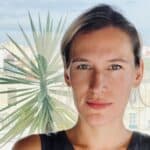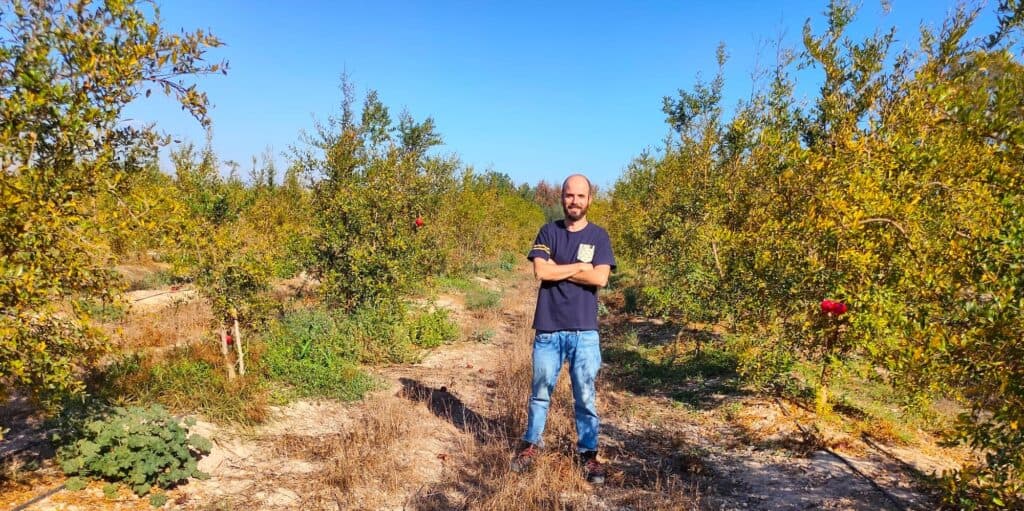POMEGRANATE MEMO
✓ Appreciated for its bright red color and its sweet and tart flavor, the pomegranate has been consumed since antiquity in Mediterranean regions. It is also found in China and in South America (Chile, Argentina…).
✓ It grows on trees called pomegranate trees, from August to December. Each pomegranate can contain up to 400 seeds enclosed in « locules ». That is where it gets its Latin name « granatus », which means « many-seeded ».
✓ Very rich in vitamin C and many antioxidants, it boosts the immune system, is anti-inflammatory, antibacterial, and is being closely studied in cancer research.
A family-run plantation
Dany’s family has been growing pomegranates since the 1980s in Sant Joan d’Alacant, on the outskirts of Alicante. This region, sunny year-round, is considered the orchard of Europe. There you can find subtropical fruits that usually grow far from home: avocados, mangoes, loquats…
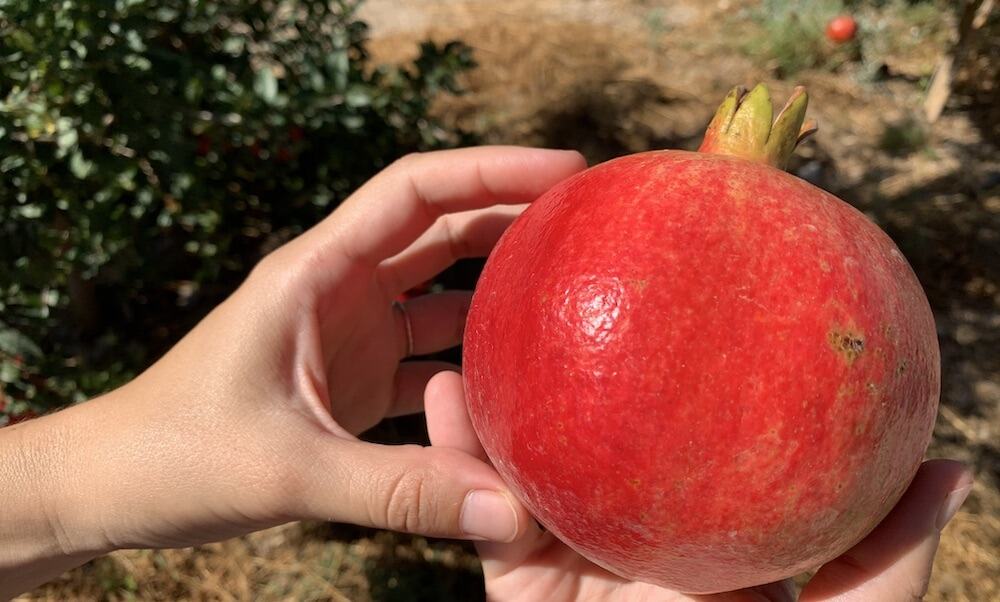
But it’s the pomegranate that interests us today — a fruit you’ll find on market stalls from September to March, sometimes even in cosmetics, and which can be very expensive. What is it about the pomegranate that we like so much?
Aside from its proven health benefits, it’s surely its bright red/pink color that has made it a star of the healthy food trend in recent years. But today we’ll learn that the best pomegranates are not the most colorful and “instagrammable”.
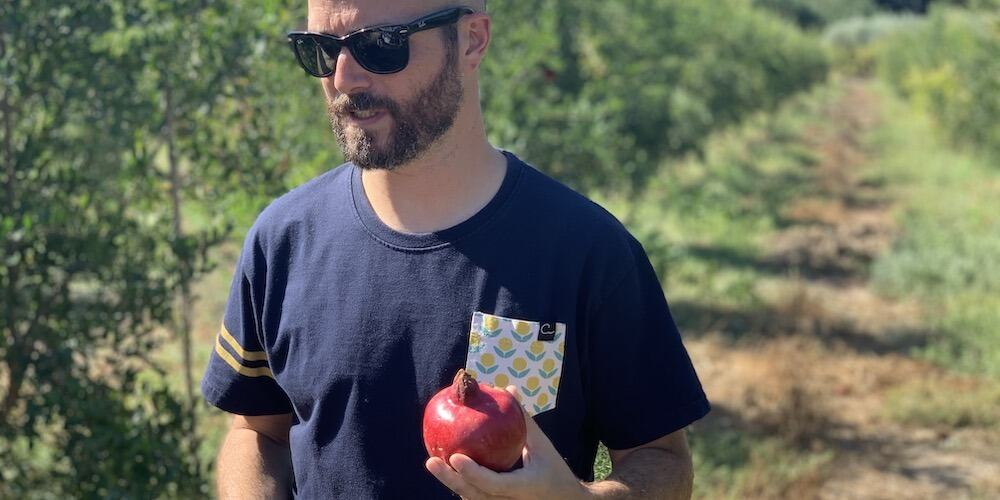
Dany welcomes us with his wife Marion under a blazing sun. After a PhD in Neuroscience in Paris, searching for a completely different and more hands-on adventure, he decides to return to Spain and take the reins of the family farm. He cultivates several varieties of pomegranates, spread over 7,000 trees and about ten hectares.
There are also olive trees, orange trees, carob trees… A small green shed at the entrance is used for direct local sales.

The variety most cultivated by Dany is a highly sought-after, endemic variety that has been present in this region for 6,000 years: the Mollar de Elche. It has a protected designation of origin, which is called D.O.P. here. It is notable for its lack of acidity, taking on a bronze and yellow color rather than a bright red, and its arils are pearly pink.
Organic farming strategies
Three people work full-time on the farm. About 120,000 kg of Mollar de Elche are harvested per year. The pomegranate is a delicate fruit, which can suffer from water stress and suddenly lack water.

Drought is one of the major challenges for the plantation, given that it never rains in Alicante! They therefore regularly flood the pomegranate trees with water from a nearby river.
“Pomegranate trees are shrubby plants: by planting cuttings, you can get trees that produce fruit by the third year. But you don’t harvest the fruit right away.“
Dany’s plantation uses conventional agriculture, because even though he’d like to switch to organic, he faces insoluble problems with yields and pressure on the appearance of the fruit (organic pomegranates are “not pretty” and don’t sell well on the market).

However, he uses organic farming strategies. First, he relies on beneficial fauna to protect his trees and fruits from predatory insects.
“We release insects: lacewings and red wasps will eat the gnats, for example. They are more effective than ladybugs, which don’t linger!“
To reduce solar radiation and retain moisture, compost leftovers and herbaceous plants are used to create a vegetative cover. The white clover used here will interact with the tree, structure the soil, attract pollinators, and trap nitrates.

He also uses pheromone traps to control pest development. These traps indicate which treatment to apply: ecological, or if organic methods don’t work, pesticides must be used.
We even come across a hare’s burrow! But let’s take a closer look and taste the pomegranates.

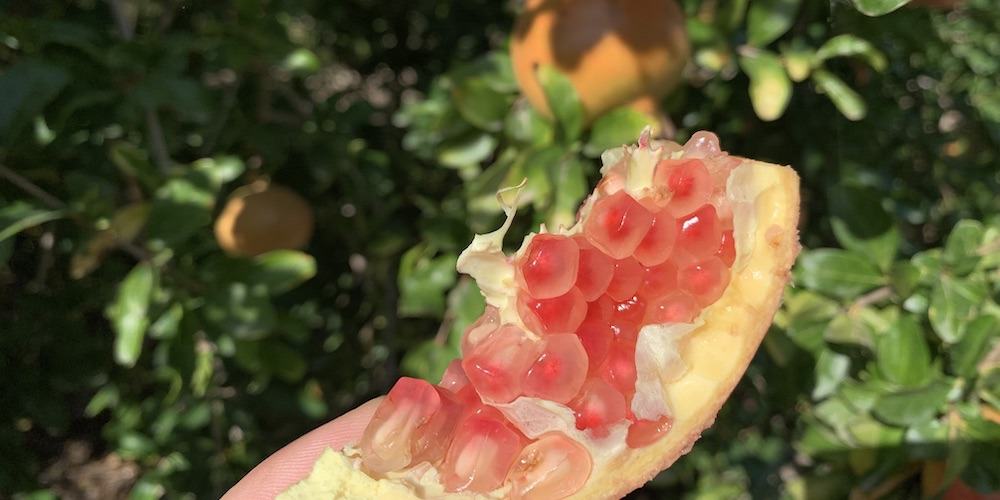

From the field to the laboratory

After 8 years cultivating pomegranates, Dany has made several observations that lead him today to seek a more innovative path.
“First, people don’t like to peel pomegranates. Next, a large part of the harvest, about 30%, isn’t valorized and ends up as juice. Finally, I only receive 35 cents per Kg harvested, and I can no longer stand the way farmers are paid.“
Drawing on his scientific background, he researched different ways to add value to his fruits and concluded that freeze-drying was the best opportunity.
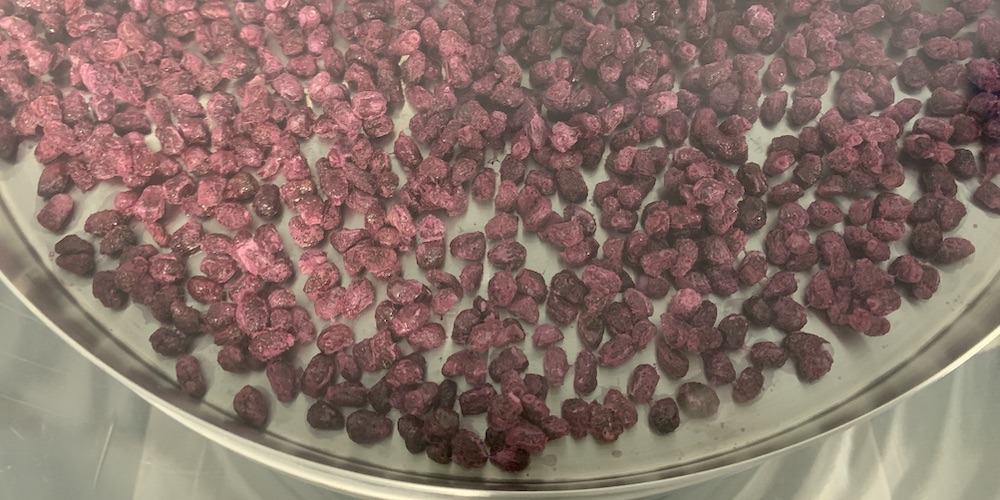
This low-temperature drying technique preserves all the nutrients and properties of the pomegranate (and there are many!), allowing it to be stored for a long time and consumed year-round in the most convenient way.
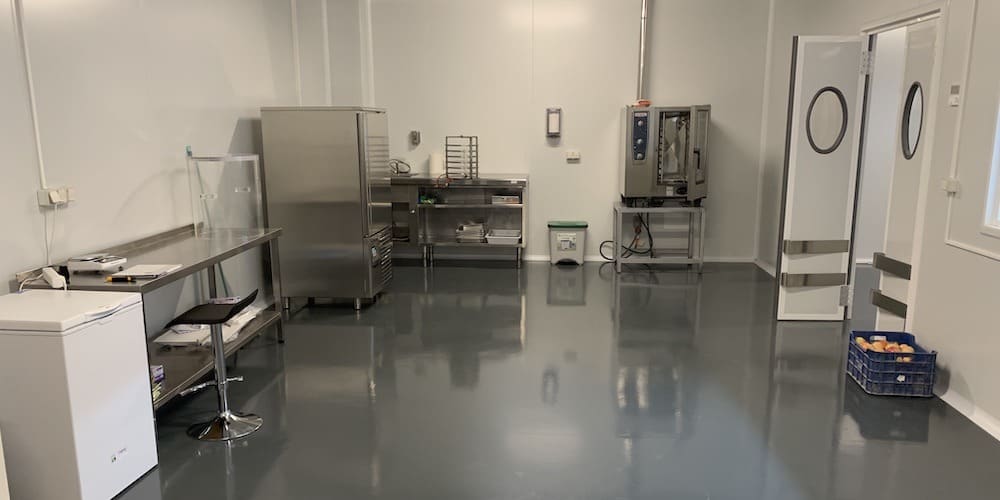
Dany brought in local investors and has just opened his own laboratory in partnership with his sisters. They will freeze-dry pomegranate seeds, as well as apples, kiwis, raspberries, and other local fruits. They have just launched their own brand, Integrana.
What a tremendous privilege to see how this wonderful fruit, the pomegranate, grows. We wish Dany and his family the best of luck with this very promising project 🙏🏻

